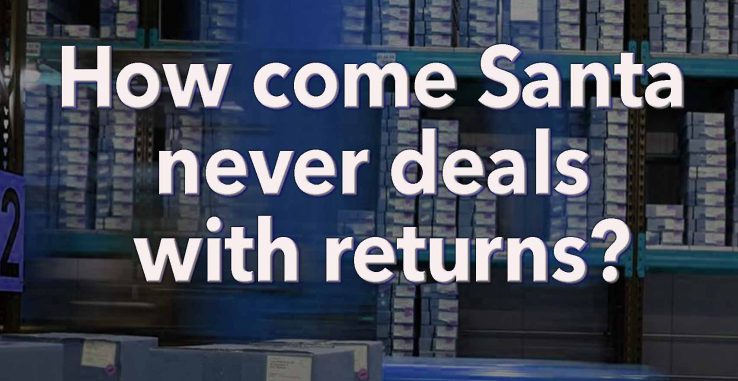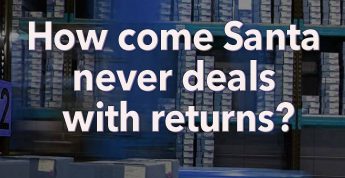In recent years there has been a general industry trend to make it as easy as possible for customers to return items when they choose to. The additional cost of a higher returns rate is usually felt to be outweighed by the positive impact of an easy ‘no quibble’ returns process. The hope is that when the process is easy and handled well it can actually be an opportunity to build customer loyalty, particularly for high value items where the additional shipping costs are a relatively small proportion of the average order value.
It’s now much easier for the customer
Five years ago it was very usual to ask people to contact customer service before making a return. More recently it’s become far more common to include a returns form with outgoing orders and accept that customers will return items without first making contact. The process can be made even easier for the customer by including a postage-paid returns label with outgoing orders.
Is your WMS under pressure?
The warehouse operations that receive and process the returned items are a key part of the overall returns infrastructure. The warehouse needs to capture all the relevant information about the return. The WMS platform then needs to make sure it’s available to the customer service team who may need to arrange the despatch of replacement items or arrange customer refunds.
When looked at from a warehouse perspective the design of your returns process usually starts by identifying the possible outcomes for the returned items. A simple process might support just two possible returns outcomes:
- return to stock
- destroy
A more complex returns process might also include some or all of the following outcomes:
- redesignate as ‘’discount item’ and return to stock
- return to manufacturer
- donate to charity
- hold for inspection
How your WMS could be working
It should be possible to configure your WMS platform to allow warehouse users to capture all the details associated with a customer return and then route each of the returned items to the appropriate warehouse location for the chosen outcome.
The returns process should allow the user to capture all the information available on the returns form where one has been completed by the customer. They might also need to record their own assessment of the item condition and categorise the return within a list of predefined reasons (e.g. Undelivered, wrong item, not as described, unwanted etc.). On occasions where customer service have to make a decision about refunding items it can also be very useful to be able to capture a photo of the item in question.
OrderFlow WMS
The OrderFlow WMS is then able to push the returns information to external customer service platforms through the appropriate API interface. Alternatively the customer service team can access the returns details by logging onto OrderFlow themselves.
In some multi-channel environments customers may be able to purchase items in-store or from other sales channels not associated with the warehouse handling the returns. In this scenario it may not be possible to link the returned items with the original order. However, in most eCommerce operations the user processing returns can link most of the returns with the original orders. This association is critical to the various customer service processes that may be triggered by the arrival for the returned items but it can also be really useful information for the warehouse manager.
Knowledge is power – and a smooth-running operation
It’s widely recognized that returns information can be useful in highlighting where improvements can be made to the way goods are presented for sale (lots of ‘wrong size’ returns might suggest that the sizing for an item of clothing is misleading, ‘not as described’ returns suggest a product description and imagery needs improvement etc.). Return information can also be used to try and identify whether particular categories of product or sectors of of your customer base have an unusually high returns rate.
What’s less often considered is how useful the same information can be in helping identify issues with your fulfilment process. Warehouse dashboards should make it easy to quickly identify when the returns rate increases and allow the warehouse managers to quickly identify any significant patterns that can help identify the reason for the increase. It should be easy to see which SKUs are returned most frequently, both in absolute terms and as a proportion of sales.
Returns processing is an important part of most fulfilment operations. Managing returns properly should be seen as a key element in differentiating your service and building customer loyalty. If you’d like to discuss how you can use the OrderFlow service to help manage your warehouse operations, we’d welcome the opportunity of a conversation.

